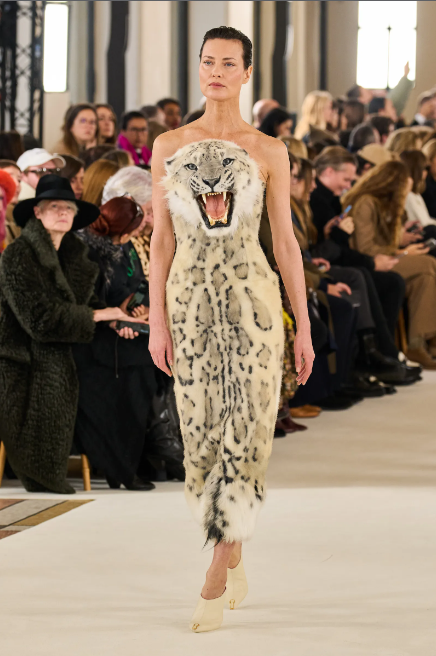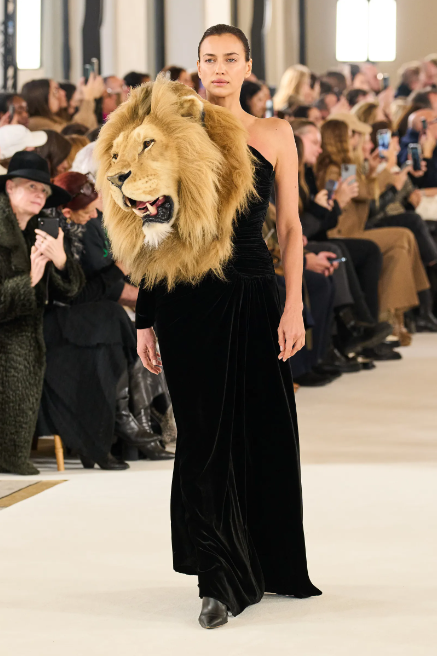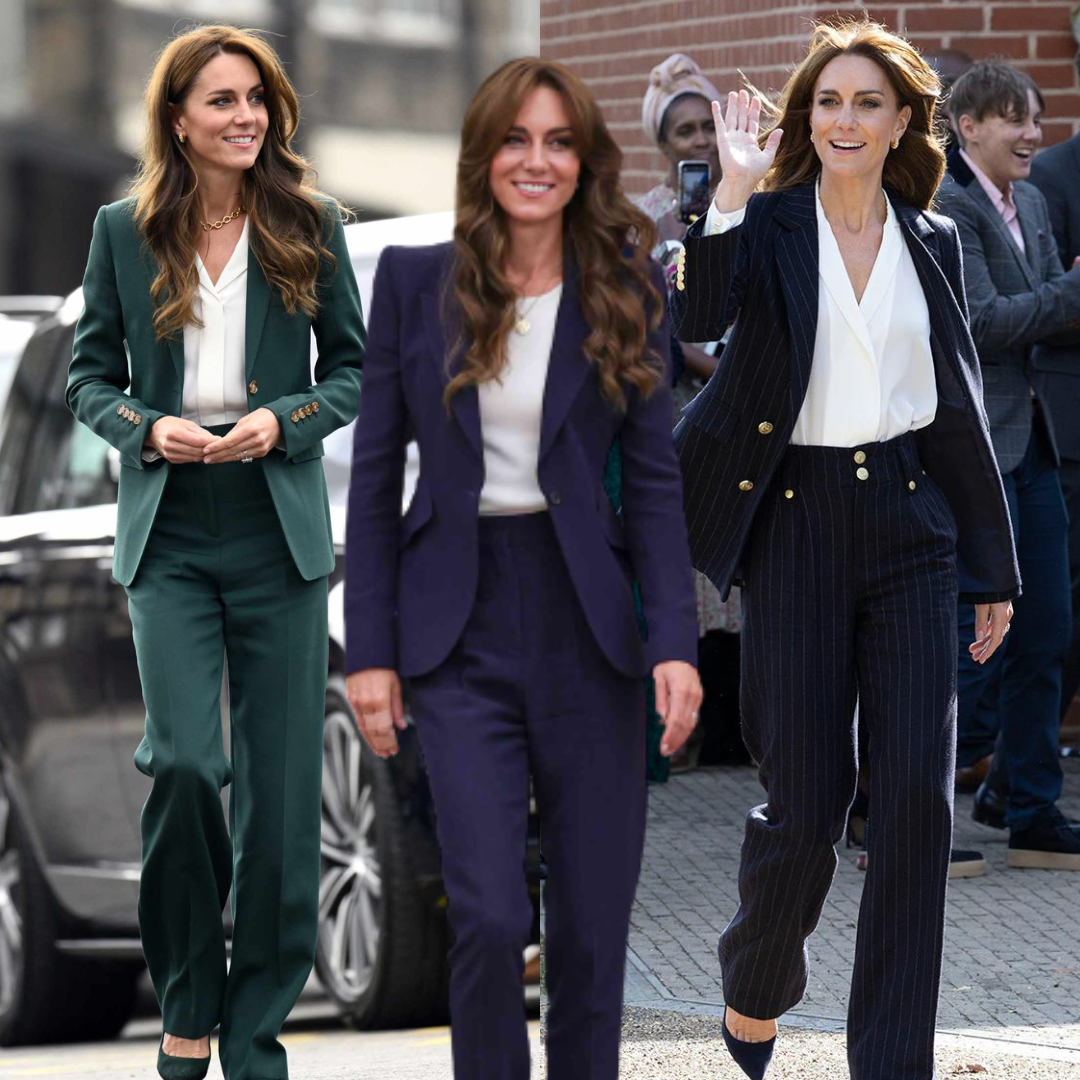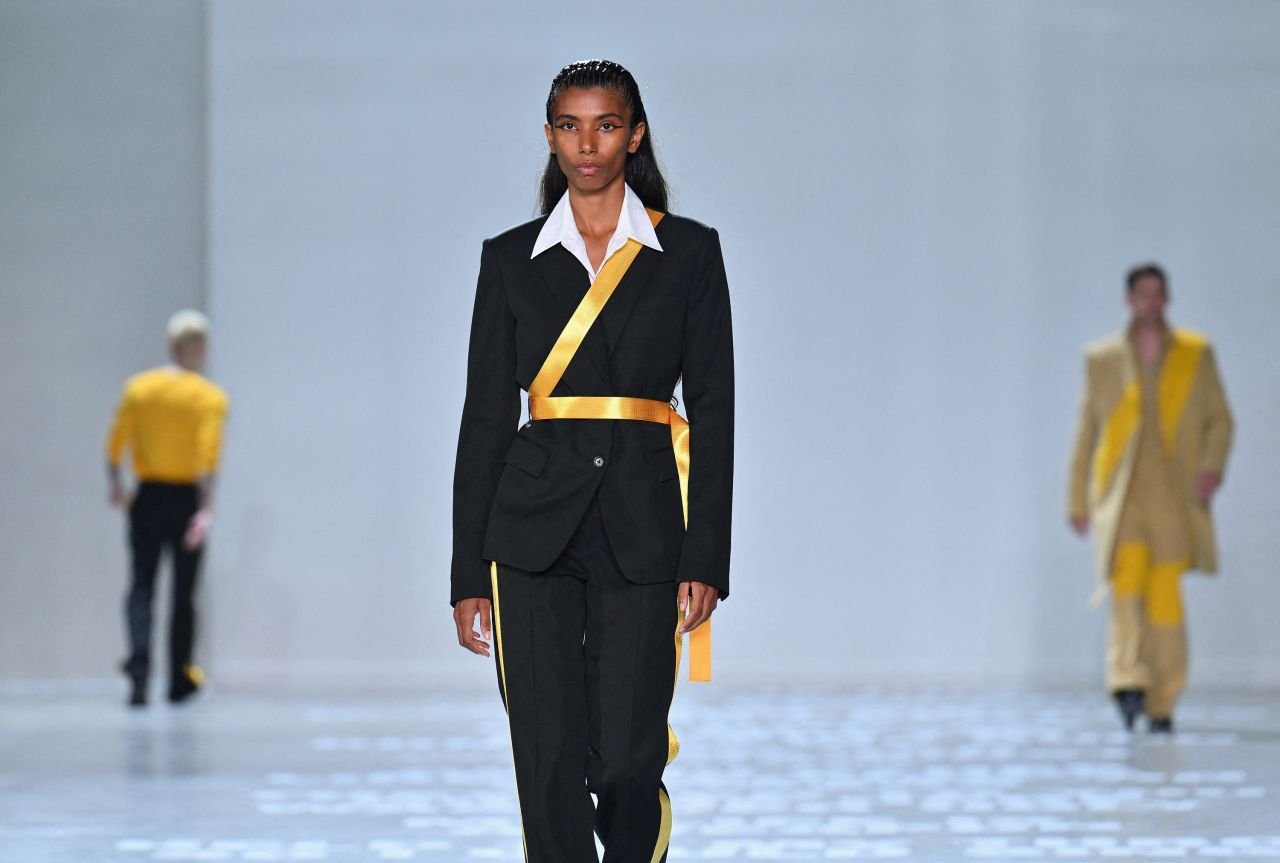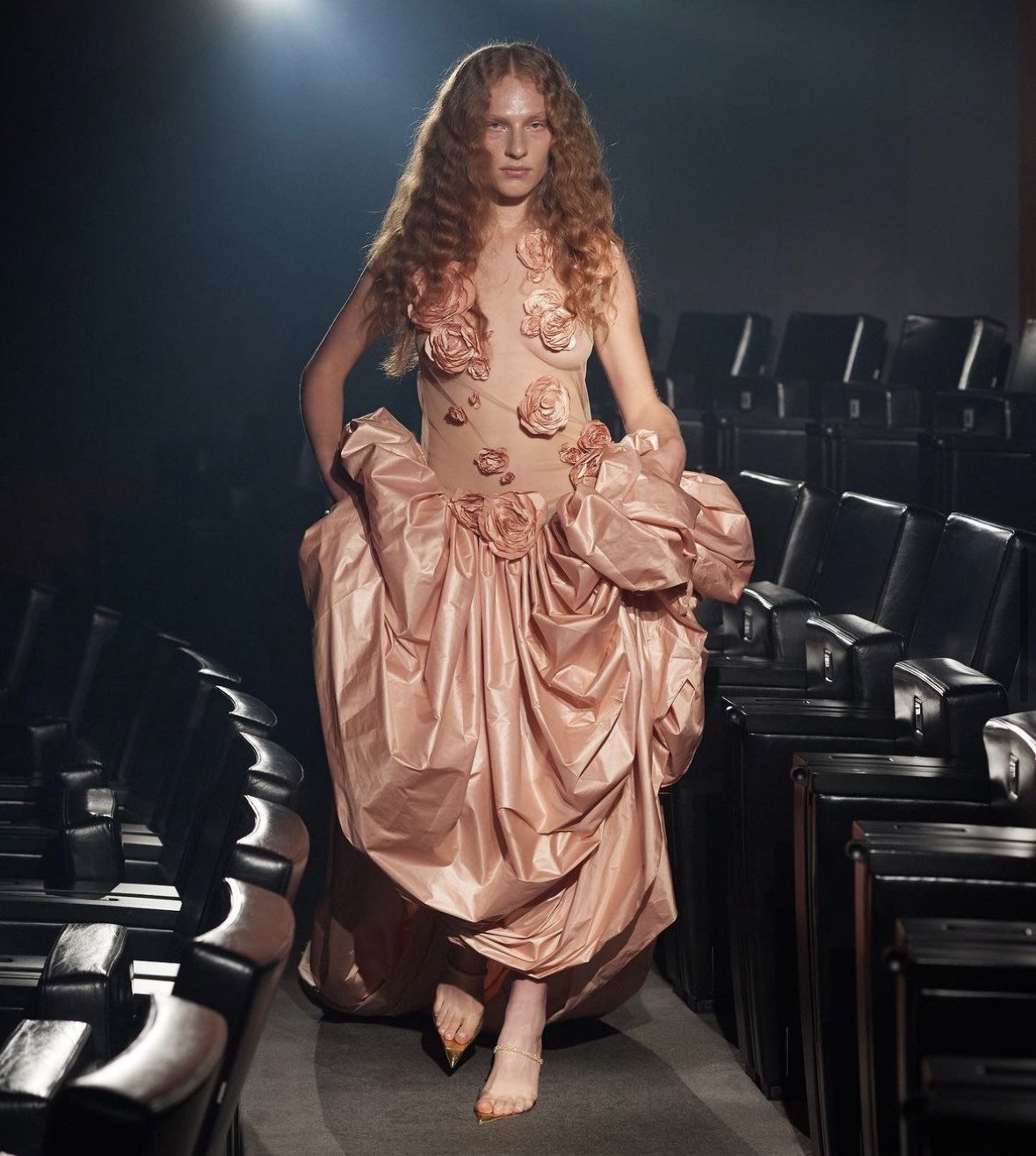The Lion, the Jenner, and Schiaparelli’s New Wardrobe
This week, Schiaparelli opened the SS23 Haute Couture shows at Paris Fashion Week with a wild and roaring new collection by Daniel Roseberry that caused a stir before any models had even walked the runway. Kylie Jenner arrived at her front-row seat in a classic LBD with an unmissable plus one that stole every guest’s focus: a life-sized lion’s head was sitting on her chest, its golden mane flowing down her body, and its gaze ready to fix on all those who passed by her.
As the show began, the same dress appeared on the catwalk, modelled by Irina Shayk. She was accompanied by Naomi Campbell, in a boxy black coat featuring a wolf’s head on its left shoulder, and Shalom Harlow, who wore a strapless snow leopard tube dress, from which the animal’s head emerged in the centre of the bust. The leopard, the lion, and the she-wolf heads instantly became the talking point of the collection and the centre of online controversy.
Schiaparelli SS23 Couture.
Fillipo Fior.
Schiaparelli SS23 Couture.
Fillipo Fior.
Although they are so lifelike that some first assumed the heads to be real pieces of taxidermy, Schiaparelli has confirmed that they are faux, writing on Instagram that the pieces are made from ‘hand sculpted foam, resin, wool and silk faux fur, hand painted to look as life-like as possible’, adding in clear capital letters: ‘NO ANIMALS WERE HARMED IN MAKING THIS LOOK’. The point was also emphasised by Kylie Jenner in her own Instagram post: ‘BEAUTY AND THE BEAST. thank you @danielroseberry and @schiaparelli for such a special morning. wow i loved wearing this faux art creation constructed by hand using manmade materials. beautiful beautiful’.
The collection, entitled Inferno Couture, is a meditation on the journey through hell that is described in Dante’s Divine Comedy. The leopard, the lion, and the she-wolf represent the sins of lust, pride, and avarice, according to Dante’s allegory. Schiaparelli has long had a reputation for its striking subversiveness, and Roseberry’s SS23 designs look back to the fashion house’s surrealist roots. The show notes describe the animal head replicas as celebrations of glory of the natural world, and as Roseberry said, these pieces intentionally cloud ‘the lines between the real and the unreal’.
The deliberate blurring of these boundaries has become the focus of online debate, as distinctions between fashion and nature, and between the catwalk and a trophy hunter’s display room were also broken down. Many comments on social media accuse Schiaparelli of glorifying trophy hunting and animal abuse. The designs turn these animals into accessories, whether they are real or not, raising questions about the exploitation of animals within the fashion industry, how we value different animals and their individual parts, and whether animal accessories can ever be ethical at all.
One Instagram user commented on Schiaparelli’s post, ‘How would u feel if those were dogs, cats or even a person’s head?’, yet Dazed points out that this has been done before: in February 2020, for example, Michele Lamy wore Rick Owens’ head as a bag to fashion week. The JW Anderson Pigeon Bag also comes to mind. Although replicating a pigeon with an astonishing likeness, the brand did not receive criticism for promoting bird shooting: how do we decide which fashion items cross the line of being too extreme?
Moreover, faux animal prints like leopard print, zebra print or snakeskin designs are common in our clothing: at what point does taking inspiration from an animal in the name of fashion go too far? Schiaparelli has additionally faced criticism that although the animal heads are faux, they have still been made using wool and silk, both of which are animal products.
Of course, fashion’s use and abuse of animals have a long history of controversy. Just this week, Gucci withdrew products containing rabbit felt, after receiving criticism that the material jarred with its no-fur pledge. Nevertheless, not everyone is against the Schiaparelli animal heads: Ingrid Newkirk, president of animal rights charity PETA, said in an interview with TMZ: ‘Kylie's look celebrates lions' beauty and may be a statement against trophy hunting, in which lion families are torn apart to satisfy human egotism.’ Considered in this light, the collection can be seen as a sign of support for the protection of animals, hinting at a world where we can celebrate this natural beauty through fashion, without causing damage.
Undoubtedly, Schiaparelli’s animal head designs have made a huge impact on the fashion world, and even as we remain unsure about their ethical nature, they have created a significant space for conversations around the future of couture and extremism on the catwalk, animal exploitation, and where the boundaries between fashion and nature should lie.
